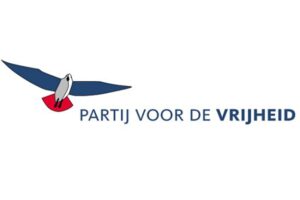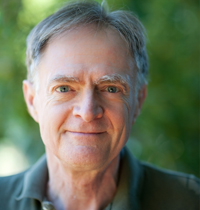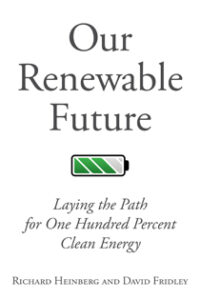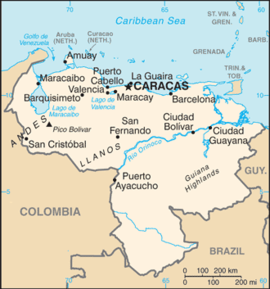PVV Blog 6 ~ “Geert Wilders Is A Fascist”
 It was this title (“Geert Wilders is a fascist”) that Liberal Arts and Sciences student Henk Bovekerk proposed at the time for his Bachelor thesis, which addressed the question of whether Geert Wilders’ PVV, during the academic year 2011-2012, should be characterized as fascist.
It was this title (“Geert Wilders is a fascist”) that Liberal Arts and Sciences student Henk Bovekerk proposed at the time for his Bachelor thesis, which addressed the question of whether Geert Wilders’ PVV, during the academic year 2011-2012, should be characterized as fascist.
In the parliamentary elections of June 2010, the PVV had achieved a resounding victory with 24 seats, and the PVV had become the tolerated partner of a VVD-CDA cabinet that ruled from October 2010 to April 2012.
At that time, the PVV had attracted more attention from other politicians, the press, and academia than ever before, and one of the prevailing questions was whether the party was fascist, based on its party program, the writings of party leader Geert Wilders, and PVV member from the early days and now Speaker of the Parliament Marin Bosma, about whom I previously wrote in this series.
A ten for the thesis
I was the daily supervisor of student Bovekerk, and the late Professor Jan Blommaert was the second reader of the thesis.
Jan Blommaert and I were both very impressed by the thesis, its structure, the style of reasoning, and the English, and we decided to award the thesis the highest grade: a 10.
However, I did express to student Bovekerk that I found the proposed title mentioned above, “Geert Wilders is a fascist,” to be too much of a personal attack, so the student came up with the title “Prototypical Fascism in Contemporary Dutch Politics,” although Bovekerk did maintain in the text his conclusion that Wilders was a fascist.
The thesis was archived in the university archive, and we went about our daily business. But that was short-lived. The thesis was mentioned on the intranet of our faculty, with mention of the highest grade, and as far as I have been able to reconstruct, it was one of our own students who brought the thesis and the high grade into the public eye.
Media Bombardment
On what was otherwise a peaceful Friday afternoon in January 2012, I was bombarded with calls from all over the Dutch media with the news that ‘student Bovekerk considered Geert Wilders’ PVV and Geert Wilders himself to be fascist’ in his BA thesis. The press cried out: ‘De Ruiter gives student who claims PVV is fascist a 10’. The frenzy that ensued lasted for a long time and was very threatening.
Robert Paxton
Bovekerk had conducted an analysis of PVV ideology based on the work of Robert Paxton in “The Anatomy of Fascism” (2004). Paxton considers fascist movements in five ‘life phases’, and because space is limited in this blog to delve into all his considerations, I present the conclusion of the student: Geert Wilders’ PVV fit into Paxton’s timeline of life phases and was unequivocally in phase 1. Or, in Bovekerk’s words (p. 51):
‘I have … attempted to demonstrate that Wilders and the PVV are the prototype of contemporary fascism. Driven by nationalism and racism, the PVV divides the world along Manichean lines and claims that the Netherlands and the West are seriously threatened by Islam. It promises to solve this crisis through a policy of exclusion, such as banning the Quran and codifying Dutch dominance and the subservience of Islam in the Dutch constitution. The PVV views the left as its enemy and constantly seeks to discredit it. … The PVV is a party of visceral emotions, devoid of philosophical underpinnings, intellectual debate, and avoiding critical media, aiming to appeal to the emotions of voters rather than reason. This is what fascist movements did in phase one, according to Paxton. And that is what the PVV does. Thus, the PVV is in phase one a fascist movement, and as such, it can rightly be called the prototype of contemporary fascism.’
Phases 2 and 3 are characterized by ‘rooting in the political system’ and ‘gaining political power’, and because the PVV was a tolerated partner at the time, Bovekerk concluded that the PVV had also penetrated these two phases.
Viewed from the Paxton perspective, one could now conclude that the PVV has shifted even further into Paxton’s phases today because the party is now the largest in the country, holds the position of Speaker of the House, and the party is seriously engaged in forming a government.
But is the PVV definitively fascist?
Are Comparisons with Fascism Meaningful?
At the time, I always argued that comparisons between – in this case – the PVV and past fascism were not meaningful. My argument was that such comparisons are unnecessary because a glance at the PVV’s party program already made it clear that it was and is filled with disdain for the elite, advocating for the own people, xenophobia, racism, and discrimination. Moreover, comparisons with old Italian and German fascism always evoke a lot of emotions, and before you know it, you’re engaged in the moral question of whether you can and should make such comparisons instead of asking how we can characterize the party without those comparisons. And for me, it was and still is evident: the party unequivocally advocates undemocratic positions and is a potential danger to democracy. That’s what I thought then and still think now. We don’t need World War II to draw those conclusions. By the way, I fully supported Bovekerk’s academic endeavor. Guiding a student in a thesis doesn’t automatically mean that the supervisor subscribes to the student’s conclusions. The guidance is about assessing the student’s academic skills.
Later, I did reconsider my position. Completely ignoring World War II does not do justice to the lessons we can draw from that war. But my final conclusion remains the same.
Regret about the 10?
I have often been asked if I regret giving the 10, and the answer until this day is that I do not regret it. A 10, I replied, stands for ‘excellent’ and not for ‘perfect’. Perfect, I argued then and still do now, is only God (if He exists, then He cannot be anything other than perfect, otherwise He doesn’t exist). Jan Blommaert and I had the highest appreciation for the work of the student, who, incidentally, was also bombarded by the media.
Twelve years have passed since. The question of whether the PVV is fascist has become less relevant. But the party is allied with the Italian Lega Nord, the French Rassemblement National, and the German Alternative für Deutschland in the European Parliament; especially the Lega Nord and the Alternative für Deutschland are characterized as neo-fascist or neo-Nazi parties.
Fascist or not, I observe that now the party is more socially acceptable than ever, it is also more than ever a greater threat to democracy.
Why Artificial Intelligence Must Be Stopped Now

Richard Heinberg
03-21-204 ~ The promise of AI is eclipsed by its perils, which include our own annihilation.
Those advocating for artificial intelligence tout the huge benefits of using this technology. For instance, an article in CNN points out how AI is helping Princeton scientists solve “a key problem” with fusion energy. AI that can translate text to audio and audio to text is making information more accessible. Many digital tasks can be done faster using this technology.
However, any advantages that AI may promise are eclipsed by the cataclysmic dangers of this controversial new technology. Humanity has a narrow chance to stop a technological revolution whose unintended negative consequences will vastly outweigh any short-term benefits.
In the early 20th century, people (notably in the United States) could conceivably have stopped the proliferation of automobiles by focusing on improving public transit, thereby saving enormous amounts of energy, avoiding billions of tons of greenhouse gas emissions, and preventing the loss of more than 40,000 lives in car accidents each year in the U.S. alone. But we didn’t do that.
In the mid-century, we might have been able to stave off the development of the atomic bomb and averted the apocalyptic dangers we now find ourselves in. We missed that opportunity, too. (New nukes are still being designed and built.)
In the late 20th century, regulations guided by the precautionary principle could have prevented the spread of toxic chemicals that now poison the entire planet. We failed in that instance as well.
Now we have one more chance.
With AI, humanity is outsourcing its executive control of nearly every key sector —finance, warfare, medicine, and agriculture—to algorithms with no moral capacity.
If you are wondering what could go wrong, the answer is plenty.
If it still exists, the window of opportunity for stopping AI will soon close. AI is being commercialized faster than other major technologies. Indeed, speed is its essence: It self-evolves through machine learning, with each iteration far outdistancing Moore’s Law.
And because AI is being used to accelerate all things that have major impacts on the planet (manufacturing, transport, communication, and resource extraction), it is not only an uber-threat to the survival of humanity but also to all life on Earth. Read more
The Double Edge Theater’s Project To ‘Rematriate Land’

April M. Short
03-19-2024 ~ Meet a theater group that left the city to reimagine a local economy.
The economic realities in the U.S. do not generally support working-class artists and culture bearers—an issue that has only been exacerbated by the COVID-19 pandemic. According to a March 2021 report titled “Solidarity Not Charity: Arts and Culture Grantmaking in the Solidarity Economy,” 63 percent of creatives in the U.S. were “fully unemployed” as of December 2020 and one-third of museums said they would not open after the pandemic. The report was commissioned and released by Grantmakers in the Arts to encourage investors to fund arts and culture more broadly.
Perhaps because there are seldom mainstream systems of support for artists in the U.S., they are often the ones responsible for envisioning equitable ways of living and being. It is artists who often create alternatives to the existing economic models, spearheading many of the mutual aid efforts that have helped communities survive challenging times (this became especially visible during the early years of the COVID-19 pandemic), coming up with housing solutions like community-owned land trusts and co-ops, and offering the means to relocalize supply chains. As the Solidarity Not Charity report details, artists are building what is often called the solidarity economy or local peace economy.
The Double Edge Theatre, a cultural cooperative and ensemble collective in Ashfield, Massachusetts, offers an example of how artists have successfully reimagined the economy and created networks of mutual support. The company was founded in Boston in 1982, but by the end of the 1980s, gentrification and rising costs in the city made it difficult for the group to enact its creative visions, according to Carlos Uriona, an actor and the theater’s cultural strategist. This economic pressure became the catalyst for a unique model leading to a community-supported economy that has become a successful haven for the arts for decades.
As the theater’s mission statement notes, their “… [v]ision is to prioritize imagination in times of creative, emotional, spiritual, and political uncertainty.”
The theater has been repatriating 105 acres of farmland for the purpose of promoting culture—or as Uriona puts it, they have been “rematrating” the land, as the theater was initially founded and largely led by women.
“By the early 1990s, [the theater members] were looking for an alternative model,” he says, noting that at the time he was not yet part of the theater, as he arrived in 1996 from Argentina after being offered residency. “They [Double Edge Theatre] wanted to create a model where they could rehearse and produce work, but at the same time invest in long-term research projects and deeper work,” Uriona says. “They also wanted to be able to collaborate intensively with foreign countries, and a lot of those countries were on the other side of the iron curtain during those days—[like] Eastern Europe and Central Europe—they also wanted to work with people in South America. In Boston, at the time, the idea of bringing people like me on board for a residency, and housing them, was nearly impossible.”
The group searched for an alternative space outside the city, and in 1994 they found the farm where they currently reside: 105 acres of land in rural Massachusetts. The farm is classified as Agricultural Preservation Restriction (APR) land and the company purchased it as a collective, with the understanding that they could not develop the land into condos or use it for other purposes. Instead, they would have to farm, live, and work in the farmhouse and farm buildings.
While most of the members of the theater were relatively urbanized, they decided to take a leap of faith and learn how to farm—with the intention of building a community where actors could dedicate themselves to the theater full time and stay with projects for a long term without outside strains. Rather than having to take a second job to fund housing and living expenses, at the farm, one “day job” for the members of the theater became farming, where they produced their own food, and eventually, took up other necessary projects like carpentry. They also worked on administrative duties at the theater, including marketing and writing grants.
For a few years, the group juggled both locations: Boston and Ashfield, but in 1997 they made the choice to commit fully to the farm, which Uriona says felt like a significant risk at the time.
“We decided to move the group completely [to Ashfield] knowing it was a risk,” he says. “Everybody was telling us, ‘You’re probably not going to be able to make a theater work out there and you’re not going to be able to fund it; you’re sinking money into something that is not going to work.”
When the theater bought the farm, small farms were already under significant strain in the post-Nixon era, which saw an increasingly industrialized Big Ag takeover, and the economic realities of small-scale farming were bleak. It was clear that the farm would not produce enough to fund the members of the group.
Meanwhile, the surrounding town, made up of many small farmers, was undergoing a reconversion as conventional small-scale farming was becoming unsustainable. The neighboring farms also started moving into boutique farming models, which were oriented toward specialized organic produce. Some became bed-and-breakfasts (many of which are now Airbnbs, and some are alternative teaching organizations).
“[Surrounding farms] stopped farming in the way they had been doing and a new system started,” he said. “At the same time, people were starting to get jobs on the internet.”
With all of these factors at play, the group knew it needed to develop its own economic model. They knew they wanted to create something that was not just based on producing theater and delivering theater.
“We didn’t want to subject our creation and our research to the entertainment industry; we wanted to remain an art group,” Uriona says. “One of my strong suits is outreach and developing a cultivation of people—not just the cultivation of plants and animals, and stuff like that. So, that allowed me to reach out to a lot of farmers here [Ashfield] and gain their trust and their cooperation.”
Little by little, the group developed a strong connection with the surrounding town and became intricately connected with the developing businesses as farms restructured. Read more
We Need A Plan For The Transition To Renewable Energy
 03-18-2024 ~ Radical societal transformation is inevitable; a plan could make a difference between catastrophe and progress.
03-18-2024 ~ Radical societal transformation is inevitable; a plan could make a difference between catastrophe and progress.
The transition to renewable energy is inevitable given the current climate crisis and the fact that fossil fuels are a finite resource. To make the shift, a detailed plan is required to indicate the first steps and anticipate challenges in allocating resources and the policies needed to achieve the outcome. Germany has arguably accomplished more toward the transition to renewable energy than any other nation, largely because it has such a plan—the “Energiewende,” which seeks a 60 percent reduction in all fossil fuel use by 2050 and a 50 percent reduction in primary energy use through efficiency in power generation, especially for buildings and the transport sector.
What follows are some components of a basic plan that can be adapted according to each country or state and adjusted for contingencies.
Level One: The ‘Easy’ Stuff
The easiest way to kick-start the transition is to switch to solar and wind power for electricity generation by building lots of panels and turbines, respectively, while phasing out coal. Distributing generation and storage of these energy sources (rooftop solar panels with home- or office-scale battery packs) will help. Replacing natural gas will be harder because gas-fired “peaking” plants are often used to buffer the intermittency of industrial-scale wind and solar inputs to the grid.
Electricity accounted for less than a quarter of all final energy used in the United States in 2022. Since solar, wind, hydro, and geothermal produce electricity, it makes sense to electrify even more of our energy usage—heating and cooling buildings with electric air-source heat pumps and cooking with electric induction stoves, for example.
Transportation represents a large swath of energy consumption, mostly due to the growing number of personal cars. As of 2021, there were 250 million gasoline-fueled automobiles. While we are busy replacing these with electric vehicles, we can easily and cheaply promote walking, bicycling, and public transit.
Substantial retrofitting is needed for energy efficiency. Building codes should be strengthened to mandate net-zero or near-net-zero energy performance for new construction. Zoning codes and development policies should encourage infill development, multifamily buildings, and clustered mixed-use development. Using more energy-efficient appliances will also help.
The food system is a significant energy consumer. Increasing the market share of organic local foods can dramatically lower the amount of fossil fuels used to manufacture fertilizers as well as in food processing, and in transportation. We can also sequester enormous amounts of atmospheric carbon in topsoil by promoting farming and land management practices that build soil rather than deplete it.
By our calculations, these actions could reduce carbon emissions by 40 percent in 10 to 20 years.
Level Two: The Harder Stuff
Solar and wind technologies provide energy intermittently. When they become dominant, we must adapt to this with substantial amounts of grid-level energy storage and a major grid overhaul to get the electricity sector to 80 percent renewables. We’ll also need to time our energy usage to coincide with sunlight and wind energy availability.
The transport sector will require extensive and costly restructuring. Densified cities and suburbs can be reoriented to public transit, bicycling, and walking. All motorized human transport can be electric, with more public transit and intercity passenger rail links. Heavy trucks could run on fuel cells, but it would be better to minimize trucking by expanding freight rail. Sails would increase the fuel efficiency of shipping, but relocalization or deglobalization of manufacturing would be a necessary co-strategy to reduce the need for shipping.
Although much of the manufacturing sector runs on electricity, many raw materials used during the manufacturing processes either are fossil fuels or require fossil fuels for mining or transformation. By replacing fossil fuel-based materials and by increasing the recycling of nonrenewable materials, we can reduce dependency on mining.
If we do all this and build far more solar panels and wind turbines, we could, by our calculations, achieve roughly an 80 percent reduction in emissions. Read more
Venezuela’s Election In The Crosshairs Of New U.S. Regime Change Scheme

Venezuela – Source: wikipedia.org
03-15-2024 ~ As Venezuela prepares to head to the polls in July, the U.S. has already started drumming up suspicion and doubt around the electoral process.
Twenty-five years after Hugo Chávez took office and began the Bolivarian Revolution in Venezuela, U.S. officials have still not tired of dreaming up new plots to overthrow the country’s government. Five years ago, following the last presidential election, they attempted to install Juan Guaidó—a politician most Venezuelans had never even heard of—as the country’s head of state. And now, with the date for the next presidential election officially set for July 28, the Biden administration is gearing up for the biggest regime-change push since the Guaidó coup attempt.
Venezuela has long been a target for U.S. intervention because of its efforts to build an alternative model to the neoliberal capitalism pushed by institutions like the IMF and World Bank. First theorized and implemented under the leadership of Chávez, the Bolivarian Revolution in Venezuela puts forward a new model that emphasizes using the country’s resources, such as its oil revenue, to fund crucial missions. These then guarantee rights such as education, food, housing, transportation, culture, and sports to historically excluded majorities, to decrease longstanding socioeconomic inequality. A central part of the Bolivarian Revolution is the political and cultural transformation of the people through the promotion of Venezuelan national culture, internationalism, anti-imperialism, and the empowerment of all people as political subjects with rights and responsibilities. It is a project in direct contradiction to U.S. interests in the oil-rich country and the region Washington considers its backyard.
The 2024 Elections
President Nicolás Maduro is running for re-election as the candidate of the United Socialist Party of Venezuela (PSUV) and the broader Great Patriotic Pole coalition. He has built his campaign around a program referred to as the “Seven Transformations,” proposing major new initiatives in the fields of economic modernization, asserting national sovereignty, safety and security, ensuring social rights, political participation, the environment, and geopolitics. These aim to maintain the pro-poor, socialist orientation of the country’s development model while enacting reforms to stimulate greater economic activity and counteract the impact of crippling U.S. sanctions.
The opposition is divided into several different camps. The largest coalition of opposition parties is called the Unitary Platform and consists of parties or factions of parties controlled by the Venezuelan elite who were displaced from positions of power as a result of the Bolivarian Revolution. The Unitary Platform has taken part in several rounds of negotiations with the government over the past year leading up to the elections and signed an agreement last October known as the “Barbados Agreement.”
In this agreement, the opposition was granted concessions on issues related to the organization of the electoral process, and in exchange, the United States agreed to loosen some sanctions relating to Venezuela’s oil and mining industries. The Barbados Agreement stipulated that only opposition figures who are eligible according to existing laws would be permitted to run. At this stage, the Unitary Platform has not chosen a candidate.
The specifics of how the electoral process will be carried out, regulations on campaigning on media platforms, participation of electoral observers, and the updating of electoral rolls were outlined in an agreement signed on February 28. The agreement was the product of dialogue among over 150 political and social organizations and was based on over 500 proposals. Ninety-seven percent of the political parties registered with the National Electoral Council participated.
Nonetheless, U.S. officials have presented this electoral process, subject to such extensive deliberation and approved with such wide support, as an attack on democracy.
María Corina Machado and the Fraud Narrative
The approach of the U.S. government follows a familiar script—wage a campaign in the media and through international organizations to cast doubt on the integrity of the electoral process so relentlessly that the result can be presented as fraudulent no matter what the actual evidence is on election day.
The key piece of the “electoral fraud” narrative is already in place and revolves around the disqualification of the opposition figure María Corina Machado.
Machado is the oldest daughter of Henrique Machado Zuloaga, who was an executive of Sivensa. One of Venezuela’s largest steel companies, Sivensa was nationalized in 2008 under Hugo Chávez. Since the start of the Bolivarian Revolution, Machado has been active in the right-wing opposition and has gone so far as to support destabilization campaigns and attempts to overthrow Venezuela’s democratically elected governments. She served as a member of Venezuela’s National Assembly from 2011-2014.
In July 2015, the Venezuelan comptroller general’s office announced that Machado was barred from holding public office for a period of one year after neglecting to disclose the extent of her earnings while she held public office. Read more
Nepal Experiences Another Political Reversal As Public Takes A Backseat
 03-15-2024 ~ Nepal’s recent political changes, forming a coalition government led by the two largest communist parties, have implications for stability. Pushpa Kamal Dahal’s continued prime ministership and the inclusion of smaller parties signal shifting alliances.
03-15-2024 ~ Nepal’s recent political changes, forming a coalition government led by the two largest communist parties, have implications for stability. Pushpa Kamal Dahal’s continued prime ministership and the inclusion of smaller parties signal shifting alliances.
On March 4th, Nepal’s two largest communist parties united to establish a new coalition government, including smaller parties as partners. Pushpa Kamal Dahal, leader of the Maoist party, will continue as prime minister, a year after his initial election. Dahal has severed ties with the Nepali Congress Party, the largest parliamentary group, and has allied with the Communist Party of Nepal (Unified Marxist-Leninist), the second-largest party led by Khadga Prasad Sharma Oli. Following the shift in coalition dynamics, the prime minister is obligated to seek a vote of confidence in Parliament within 30 days, a process anticipated to result in his favor.
The new Left Alliance coalition will consist of four political parties: the Communist Party of Nepal (Maoist Centre), the Communist Party of Nepal-Unified Marxist Leninist (CPN-UML), the Rastriya Swatantra Party, and the Janata Samajbadi Party or People’s Socialist Party.
The increasing rift between the Maoist Centre and Nepali Congress parties regarding the claim to the chairmanship of the National Assembly—Nepal’s upper house of government—had posed a significant threat to the already delicate ruling coalition.
Following its Standing Committee meeting on February 28, the Maoist Centre opted to fight for the National Assembly chairmanship while Dahal had promised support to the Nepali Congress (NC) in the election for the Chair. Nepali Congress President Sher Bahadur Deuba intended for the party’s senior figure and recently elected legislator, Krishna Prasad Sitaula, to take on the position of National Assembly Chairman.
Dahal, known for leading a decade-long armed struggle against the then-monarchy starting in 1996, transitioned into mainstream politics following a 2006 peace deal facilitated by the United Nations. Although currently serving his third term as prime minister, he is yet to complete a full five-year term. Since abolishing its 240-year-old monarchy in 2008 and becoming a republic, Nepal has witnessed the formation of 13 governments.
The Electoral System in Nepal and the State of the Parties
The Federal Parliament of Nepal is structured into two houses: the House of Representatives and the National Assembly. The House of Representatives is composed of 275 members, with 165 elected through a first-past-the-post system, representing specific constituencies, and the remaining 110 chosen via proportional representation. On the other hand, the National Assembly comprises 59 members. In this house, each of the seven provinces elects eight members through an electoral college, and the President additionally appoints three members based on government recommendations.
The Nepali Congress (NC), a center-left social democrat party, is the largest party in the House of Representatives, securing 89 seats. Close behind is the Left Wing Communist Party of Nepal (Unified Marxist–Leninist) (CPN-UML), led by KP Sharma Oli, with 79 seats. Dahal’s party, the Communist Party of Nepal (Maoist Centre), holds 30 seats. The Rastriya Swatantra Party has 21 seats, while the Janata Samajbadi Party has 12 seats. The newly formed coalition of these latter four parties boasts a combined strength of 142 seats.
Dahal holds the role of kingmaker due to the intricate coalition dynamics in Nepal. The Nepali Congress and the Communist Party of Nepal (Unified Marxist–Leninist) have a history of ups and downs in their relationship, preventing them from forming an alliance at present. Despite past collaborations, their governments collapsed due to disputes over various issues. This leaves them with no alternative but to consider Dahal’s party as a potential alliance partner. Dahal’s credibility is further bolstered by his past leadership in the struggle for democracy. Read more


